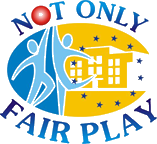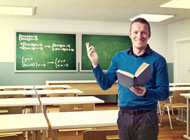
- Home
- Best
Practices - Toolkits
How to ... - Sport
Events - Guidelines
- Information
& Contacts - Project Management
A collection of student stories and initiatives about sport.
This section offers access to a collection of toolkits to promote sport at school.
-
 Physical Education Teachers
They are the main point of reference for students at school
Physical Education Teachers
They are the main point of reference for students at school
-
 Teachers
Teachers of all subjects can contribute to promote sport at school
Teachers
Teachers of all subjects can contribute to promote sport at school
-
 School Directors
Their support is a key element to promote sport at school
School Directors
Their support is a key element to promote sport at school
-
 Resources
A database of resources for teachers, PE teachers and school directors for the promotion of sport at school.
Resources
A database of resources for teachers, PE teachers and school directors for the promotion of sport at school.
Sporting events are organised in each partner country
Guidelines for policy makers willing to raise awareness on the importance of promoting sport in schools
Events
The Not Only Fair Play project has been promoted through conferences and articles.
Partnership
-
 Contractual Partners
From this section it is possible to access a description of each contractual partner of the Not Only Fair Play project.
Contractual Partners
From this section it is possible to access a description of each contractual partner of the Not Only Fair Play project.
-
 Schools
From this section it is possible to access information about the schools involved in the Not Only Fair Play Project in the 9 European countries involved.
Schools
From this section it is possible to access information about the schools involved in the Not Only Fair Play Project in the 9 European countries involved.
-
 Associated Partners
A number of associated partners officially joined the project in order to ensure the project sustainability by continuing to use the project deliverables over the next years.
Associated Partners
A number of associated partners officially joined the project in order to ensure the project sustainability by continuing to use the project deliverables over the next years.
This section of the Not Only Fair Play portal provides administrative information for the project contractual partners and for the European Commission, and is password protected.
Teachers
Homepage > Toolkits > Teachers

Teachers of all subjects can contribute to promote sport at school
How to integrate sport and healthy lifestyle approaches into the students' educational pathways
Teacher of All Subjects
‘Physical education, physical activity and sport have been shown to impact positively on the extent to which young people feel connected to their school; the aspirations of young people; the extent to which positive social behaviours exist within school; and the development of leadership and citizenship skills.’
(Stead & Neville 2010)
‘More physically fit children have improved brain function, higher academic achievement scores and superior cognitive performance than less fit children.’
(Chaddock 2012)
Everyone involved in Physical education, Sport and/or Physical Activity is convinced of its ability to further enhance lives, to motivate, to focus, and has the potential to bring out the very best in people. Many individuals are also able to take the wider ‘life skills’ they learn through physical education, sport and physical activity into other areas of life. Indeed, it would be rare to find a successful athlete who was unable to describe how different aspects of their sport have had an impact on their knowledge, behavior, attitude, or skills in other areas of their personal/professional lives. This is also true for young people. Physical education, sport and physical activity can be used to improve both their physical and cognitive development.
Schools and Colleges are full of learners whose self-esteem and confidence have benefited from participating and succeeding in some form of physical education, sport and physical activity, and who have built on this to improve their behaviors, attitudes, and performance across different areas of their lives. The key issue for teachers, coaches, and others working in educational environments is understanding how to harness what physical education, sport and physical activity can do for individuals, and turning this into a sustainable and successful strategy that works for all young people. We know that some adults (usually those who had a positive experience with physical education, sport and physical activity as a child) do this instinctively, but we also need to describe it in a way that any school/college can implement. Then we have a strategy for improving school standards. The evidence of impact is interesting. Every international research project that seeks to link physical activity, PE, or sport to an improvement in behavior or achievement finds a positive correlation, although some have stronger correlations than others. However, studies purely measuring the amount of physical activity, PE, or sport participation undertaken by pupils and their academic performance, however measured, do not show a clear and positive correlation. This tells us that just doing more physical activity isn’t by itself enough for most young people to bring about changes in behavior or achievement. Physical education, sport and physical activity strategies need to be appropriately linked into an educational strategy in order for them to be fully realized.
• To provide further evidence of the value that Physical education, Sport and Physical activity has on the school/college.
• To provide further evidence of the value that Physical education, Sport and Physical activity has on the wider community.
• To encourage school/colleges/local and national agencies to increase the opportunities for learners to actively participate in Physical education, Sport and Physical Activity.
• To provide a resource that supports the strategic planning and implementation of further Physical education, Sport and Physical Activity opportunities for all learners
• To further encourage schools/colleges to develop a shared planning and scheduling of teacher training (for teachers from other subject areas), to raise their awareness of how PE, sport and physical activity can develop life skills/ and the acquisition of cognitive, logical, mathematical, relational, self-esteem, respect for the rules, team work skills.
• To promote the idea that all teacher training (other core subjects) receive some formal training in physical education, sport and physical activity.
Similar to other whole-school improvement strategies, using physical education, sport and physical activity to improve whole-school standards works best when:
- Senior leadership, plays a role in the planning and implementation of the work;
- Pupils and staff involved are carefully identified;
- PE and other subject departments work collaboratively to develop strategies and high-quality resources; and
For this to be successful, we must ensure that physical education, sport and physical activity strategies are appropriately linked into an educational strategy.
- Want Smarter, Healthier Kids? Try Physical Education! | Paul Zientarski | TEDxBend
- Protecting and improving the nation’s healthThe link between pupil health and wellbeing and attainment. A briefing for head teachers, governors and staff in education settings
- Education ScotlandHealth and wellbeing across learning
- Education ScotlandHealth and wellbeing: responsibility of all - Secondary school research project
- BBC News ScotlandExercise 'boosts academic performance' of teenagers
- The GuardianBest practice, advice and insight into how sport can boost students' wellbeing
- The GuardianOn your marks: how sports training can boost exam preparation
- The GuardianThe Association Between School-Based Physical Activity, Including Physical Education, and Academic Performance
- Managing sportSport in Education Project – SPORT New Zealand
- Finnish Schools on the Move (only in finnish)Increasing physical activity and decreasing sedentary time among school-aged children
- Sport EnglandSport and Age
- Youth Sports TrustHow does physical education and sport impact on academic achievement?
- The GuardianHow can PE and sport improve student health and wellbeing? – live chat
- Physical Acitivy and Health - Practice briefing - childrenThis BHFNC practice briefing suggests practical strategies for promoting physical activity with children aged 6-11.
- The Effects of Extracurricular Activities on the Academic Performance of Junior High Students
- Research Link / Extracurricular Activities: The Path to Academic Success?
- Participation in High School Physical Education --- United States
- Positive Effects of Extra Curricular Activities on StudentsThis paper describes the role of extracurricular activities and the positive effects that they can have on students
- The GuardianInside the schools fighting childhood obesity with fitness
- Active Kids Do Better Join the movement to bring physical activity back to our nation's schools
- afPEThe Association for Physical Education (afPE) has updated their Health Position Paper which outlines the crucial role of physical education (PE) in public health and the promotion of physical activity


